Coming from the sea, Valparaiso looks strewn with candy. Colors dance like forgotten rainbows across the 42 cerros (hills) that face the bay and that give this UNESCO World Heritage Site its charm.
At its front are the whirring cranes and colossal ships that speak to its importance as a working port, while rising steeply behind them are the mishmash of crumbling colonial buildings that are evidence of its tangled past.
It’s a stark difference to the orderly buzz that dominates Chile’s capital of Santiago. I have made the journey east to experience its famous quirk for myself and to meet the Valparaiso locals (known as porteños), who remain closely connected to both sea and the hills.
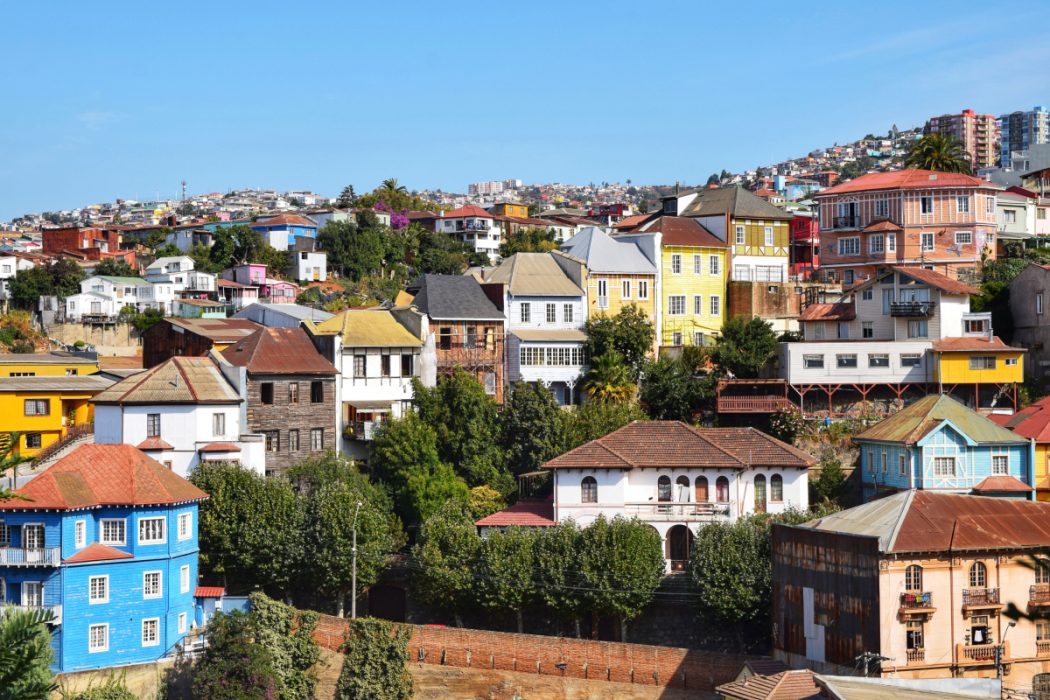
View across Valparaiso. Photographer: Yorka Abarca Marchant
I start by checking in to one of the newest additions to the Valparaiso skyline, an aparthotel so vivid and imposing on Butterfly Hill (Cerro Mariposa) that it’s hard to tear one’s eyes away. Built from recycled shipping containers and painted every color under the sun, WineBox Valparaiso is one of the world’s most unique hotels, so unique that it’s owner, Grant Phelps, had no-one to turn to for help but himself.
“I had a few ideas before I settled on WineBox. I was inspired by what I saw in my hometown of Christchurch [New Zealand] and of how they were using shipping containers to rebuild after earthquakes had destroyed much of the city. It was hard because the architects I visited wanted a different vision using prefabricated materials. There aren’t many hotels like this out there in the world, and it was a long, difficult process. Over two nights we brought 25 containers, a huge feat because the trucks are huge and the streets in Valparaiso are so steep. We had to lift up all the cables to allow the trucks to pass through, and we had to bring in the crane from Santiago.”
The hotel doesn’t shy from his past, the container aesthetic never hidden nor the obvious upcycling methods Phelps used. Rooms are insulated with newspaper and furnished head to toe in reused materials. My room is the Suite, a large rectangular box lined on two sides with floor-to-ceiling windows. The view is a heady one; far below I see the smaller hills that gently fold into the port.
Perhaps what makes WineBox most unique is the fact that it produces its own wine. It is the first hotel in the southern hemisphere to do this and is the first urban winery in Valparaiso. Phelps is a master winemaker who formerly lead the award-winning Casas del Bosque in the nearby Casablanca Valley. Part of his dream with WineBox is to make Valparaiso a wine destination, hosting regular tastings of original blends created by his local winemaking buddies, as well as creating his own tipple downstairs in the basement.
I opt to take the hotel tour, a fascinating insight into the ambitiousness of making a hotel from containers and perhaps into the mind of its deeply ambitious parent.
At the tour close (and after generous helpings to the WineBox vino), I scale the steep sides of the hill in search of lunch. The winding steps and paths cascade downwards past old houses, parked cars and lazing dogs. Walking uphill, though, takes some effort, but I appear to be the only one who notices – the porteños wander up and down nimbly, their knees accustomed to the incline after generations of Valpo life.
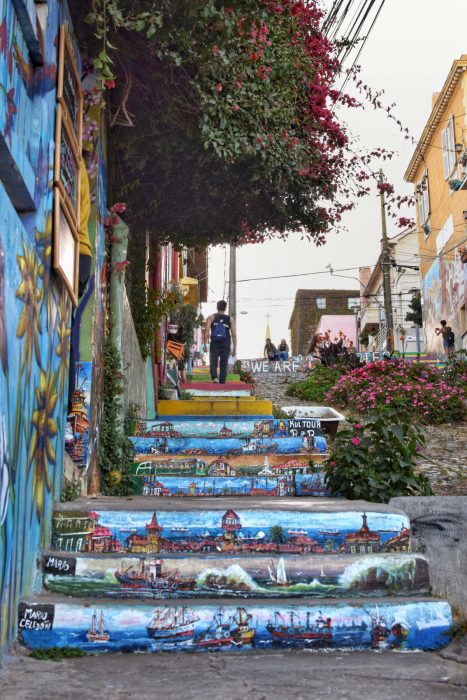
Valparaiso City of Steps. Photographer: Yorka Abarca Marchant
The city, known as the ‘jewel of the Pacific’, was founded in 1553 by Spanish conquistadors and has a history filled with references to pirate raids, debauchery, tragic fires and earthquakes. In the late 19th century, the Spanish Royal Navy had a strong presence in Chile, and a huge economic boom attracted immigrants from all over the world, particularly from England, France and Germany. They settled on its iconic hills, the most famous being Cerro Alegre and Cerro Concepcion. One of the best ways to pass the time here is to simply wander their maze of tightly woven streets, photographing its bohemian charm and questioning the lucidity of its street artists who have painted the city in a plethora of paint and stunning graphics.
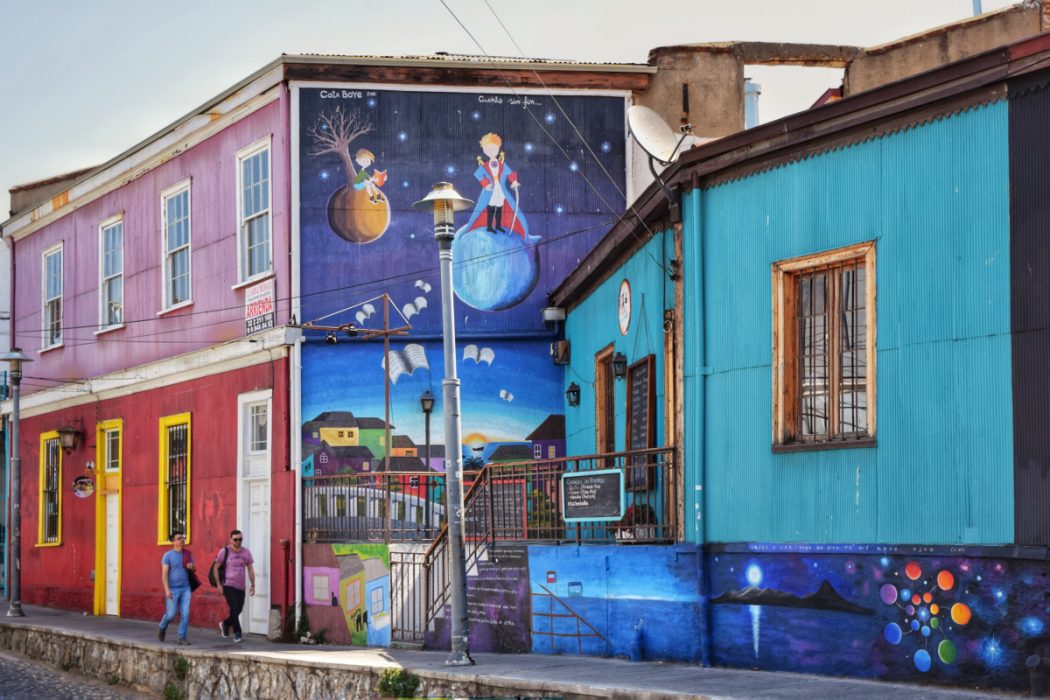
Valparaiso street art. Photographer: Yorka Abarca Marchant
For lunch, I dine on a traditional pastel de jaiba (crab pie). This staple of the Chilean coast is a warming mix of crabmeat and generous helpings of melted cheese, and is the perfect antidote to the cool breeze blowing upwards from the sea. This sea is omnipresent wherever you go in Valparaiso, so after lunch I begin the walk downhill but only after a slight detour to La Sebastiana, the former home of Nobel Prize winning poet, Pablo Neruda. The house is like a multi-tiered cake, the inside a trove of Neruda’s most treasured knick-knacks which he collected throughout the years of his tumultuous life.
Descending into El Plan, the flat commercial district of Valparaiso, and the first thing I notice a difference in atmosphere. Here the noise is loud, the traffic fast, and the crowds tight. This area is like any other Chilean city, albeit one peppered with some of the nation’s oldest buildings. Plaza Sotomayor is the historic square, and is dominated by a monument to Battle of Iquique heroes and the headquarters of the Chilean Navy. I cross it and find myself standing in front of the sea amongst other tourists, working residents and lingering couples walking arm-in-arm, all of us marvelling at the sheer size of the visiting cruise ships, cranes and gently bobbing fishing boats.
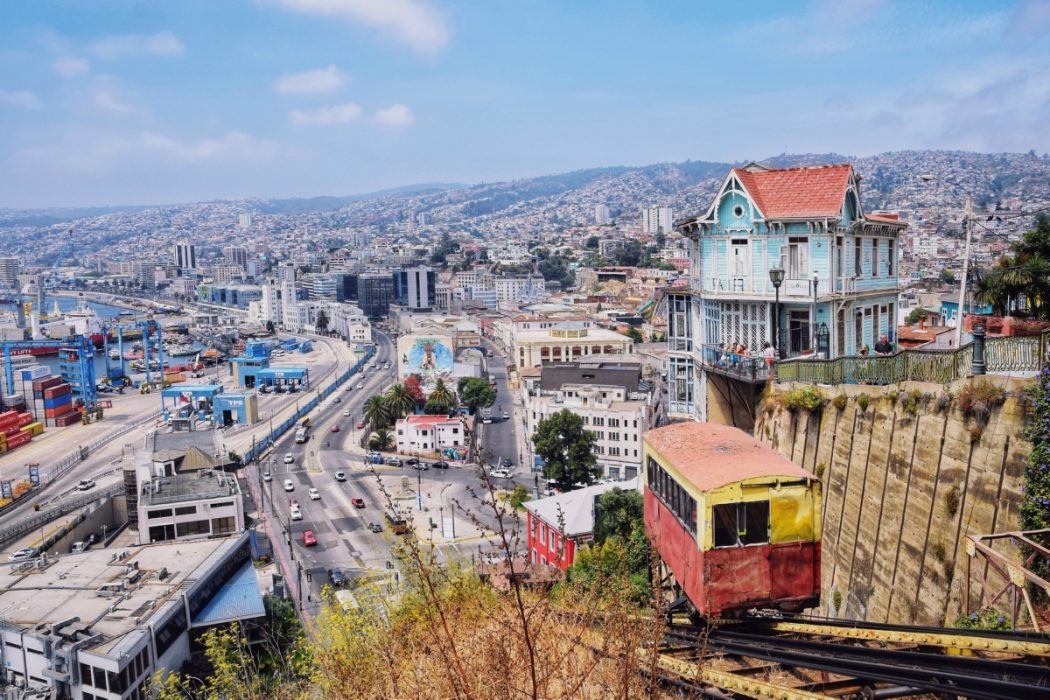
Valparaiso Funicular train on Cerro Artilleria. Photographer: Yorka Abarca Marchant
Like all great moments, this one too ends, and I move on through the city. I pass a small produce market, the feria, whose stalls are piled high with exotic fruits and vegetables like lúcuma, cherimoya (custard apple), papaya, and mountains of dark avocados. I board the nearest funicular which climbs slowly up the hill and spend the last hours of daylight lost in the maze.
Once the sun has set, I order fish and a dark Chilean red for dinner from the balcony of the popular Cafe Turri, and then take a taxi back to WineBox. I spend the night lost in the lights that glimmer from the windows, enclosed in their gentle glow until I succumb to sleep.
Experiences in Valparaiso
Tours: Take a street art tour with Valpo Street Art or combine your travels with a professional photography lesson with Miles & Smiles Chile – either of these options take you to the city’s hidden corners. Boat trips are available from Muelle Prat, right beside Plaza Sotomayor, where there are a multitude of vendors selling trips (the cheapest option being shared).
Museums: La Sebastiana is one of Pablo Neruda’s former homes and makes a fun introduction into his legacy and unusual life. The National Maritime Museum gives an excellent insight into the city’s past, when it attracted attention from all over the world and battled with pirates on a daily basis. Art lovers will want to make their way to the Palacio Barburizza, where Chilean works are displayed in a restored, historic home.
Stay in Valparaiso
WineBox is an aparthotel with self-catered rooms built from recycled materials, and which include a delicious buffet breakfast. All guests can take a tour of the facilities with winetasting of its classic wines; keep your ear out for any rooftop happenings.
Feast in Valparaiso
If you’re on a budget, then look no further than the Color Cafe on Cerro Concepcion. This tiny eatery is a bit like being in your grandma’s house – if Granny likes a splash of color, that is – and serves set price daily menus known as a colacion.
Espiritu Santo is one of Valparaiso’s favorite, best reviewed restaurants that serves the best freshly caught seafood with local ingredients in an elegant setting.
Cafe Turri is a mid-range restaurant with inside and outside seating, both offering stunning views to the harbour. The menu is seafood heavy but also has good options for children, vegetarians and some excellent steaks.
Bar Cinzano was opened in 1896 and is one of those classic bars that you can’t leave without visiting, where the aim of the game is that everyone enters a stranger and leaves as happy drinking buddies.
Getting There
By Car
By car, you can reach Valparaiso from Santiago in about an hour and a half, the fastest route being on the the Ruta 68. This option also allows you to stop at one of the many renowned wineries that dot the highway in the Casablanca Valley, such as the fully organic Emiliana, the award winning Casas del Bosque or the boutique Attilio & Mochi.
By Bus
There are multiple daily bus departures from Santiago’s main bus terminal at Pajaritos; tickets can be purchased online from company websites or at the terminal. There are various bus companies, the most well-known being Pullman and Tur Bus, and prices start from as little as US$5.
Lead image: Cerro Concepcion Valparaiso. Photographer: Yorka Abarca Marchant


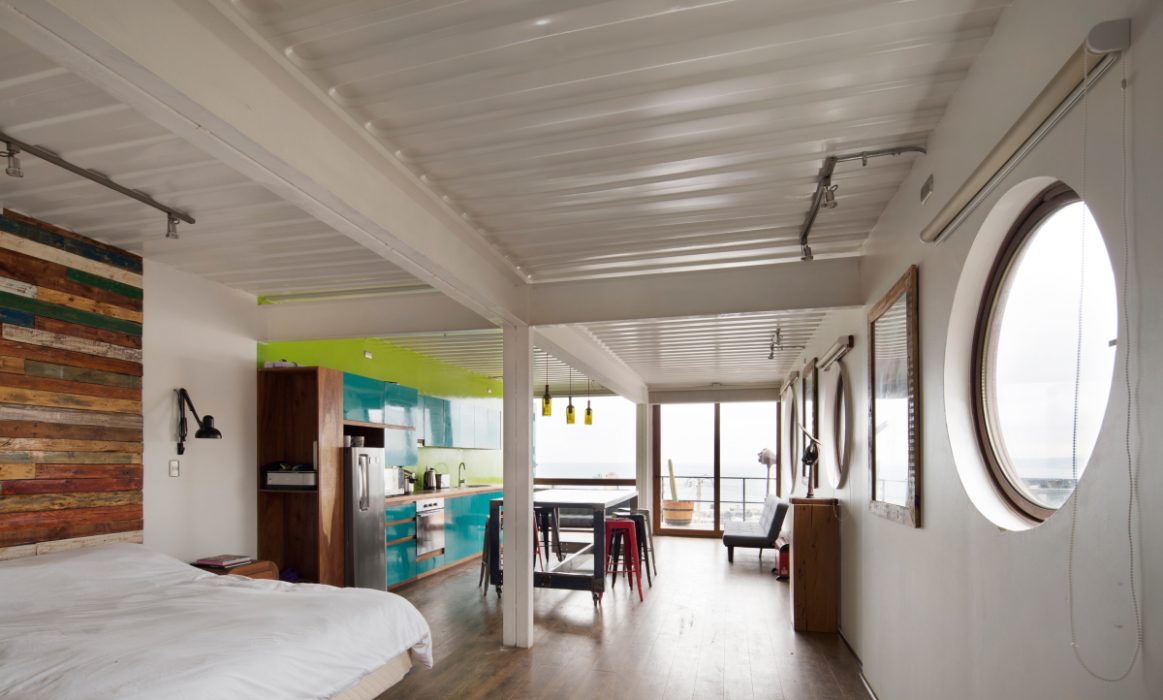
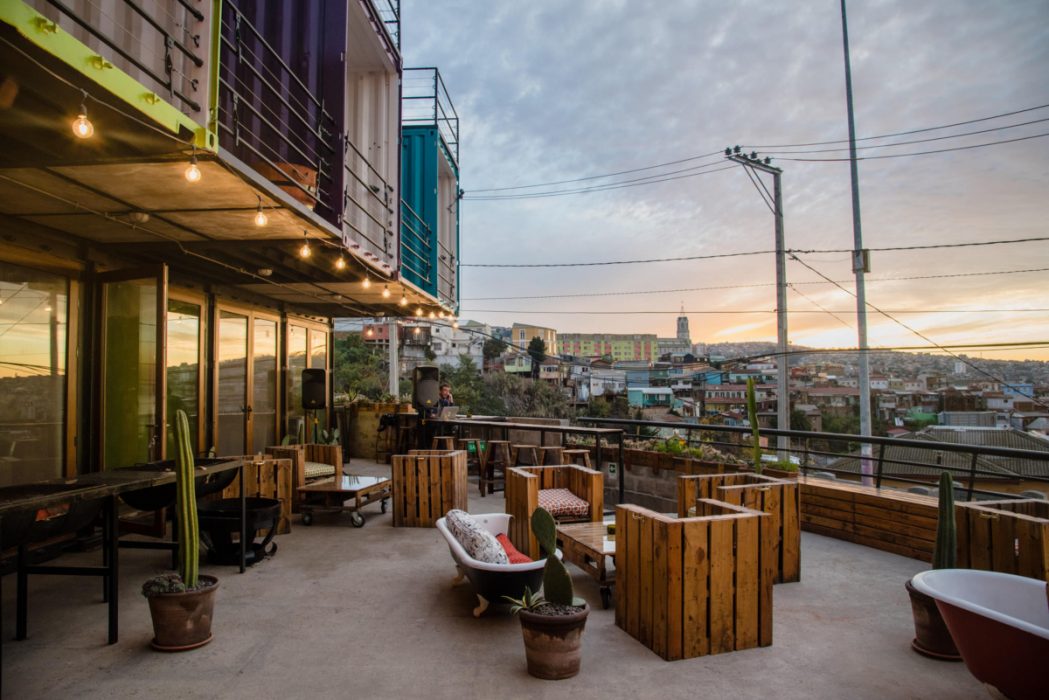

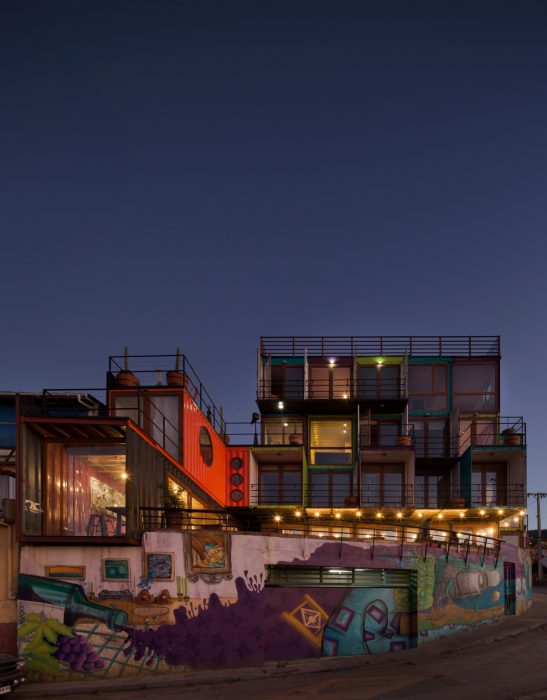

2 Comments